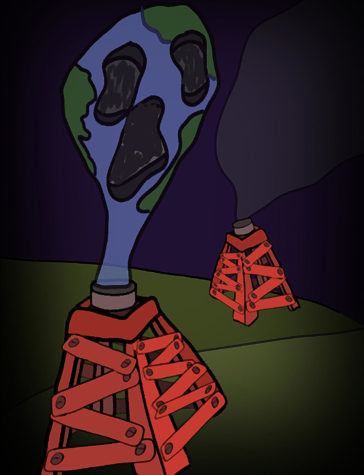Environmental activism for beginners
March 1, 2023

A train derailment spewed toxic chemicals into the creeks of East Palestine, Ohio. Police in Atlanta shot and killed an environmental activist. Microplastics are in our air, water, food and blood.
How can the average person respond to these situations? What activist efforts can Tulanians support as students or young professionals?
For students like Emma Dong, a member of Sunrise Tulane, environmental justice is more than signs and petitions. Emma defines climate justice as “Not only just saving the environment, but how we’re doing it — we want to do it in a way that supports the people first, and puts the needs of the people first. That looks less like putting more money into large companies and more like putting resources into the hands of the people.”
Sunrise Tulane is part of the Sunrise movement, a nationwide youth movement dedicated to fighting climate change. Members like Emma make up its body of student activists, who encourage divestment from fossil fuel companies.
Given that the environment affects everyone, many consider environmental activism to be an intersectional issue. Intersectional environmentalism, which identifies how injustices in marginalized communities connect to environmental issues, is a major component of environmental justice. For some, this can mean action such as occupying land slated for Atlanta’s “Cop City”, though not everyone is able to dedicate themselves to activism so thoroughly.
The average person, who may not be able to travel or spend days and weeks protesting, can still meaningfully contribute to activism efforts. Grassroots movements, for example, heavily rely on coalitions of individuals for funding and manpower. Emma draws attention to the personal stake that everyone has in protecting the environment. However, that does not mean everyone has to be the perfect environmentalist.
“Nobody is going to be a perfectly moral individual, it’s impossible to live 100% ethically. However, trying to bring what I believe politically into my own life is important as well… and I think we have a larger influence than we realize. If someone else sees you doing this, if you start an organization that’s doing this, it can expand very quickly.”
Leading by example is not the only way that the average person can contribute to environmentalist efforts. According to Dong, activism that deals with corporate or political action, while less personal and more complicated, is still within reach. In local communities, mutual aid is immensely valuable.
“At the end of the day,” Dong said, “corporations are run by people. If they don’t have people on the ground to carry out these acts, then they can’t… If people are striking and they don’t have the money to put food on the table, but their community and their neighbors are providing for them, that’s one way.”
Aside from mutual aid, it’s possible for newcomer activists to start out by holding themselves accountable on a personal level. One thing Dong suggests is monitoring their consumption, such as only buying clothing when needed. When damaged, Dong suggests repair over replacement: “One thing I’ve been working on is consuming less in the first place… Most of my clothing is thrifted.”
Ultimately, individuals are best able to control their own lifestyle. Environmental activism can start at home, but taking it further — to legislative or professional spheres — requires coalitions. Becoming involved with activist organizations like Sunrise can help environmental advocates amplify their voices and make more progress.






















Leave a Comment